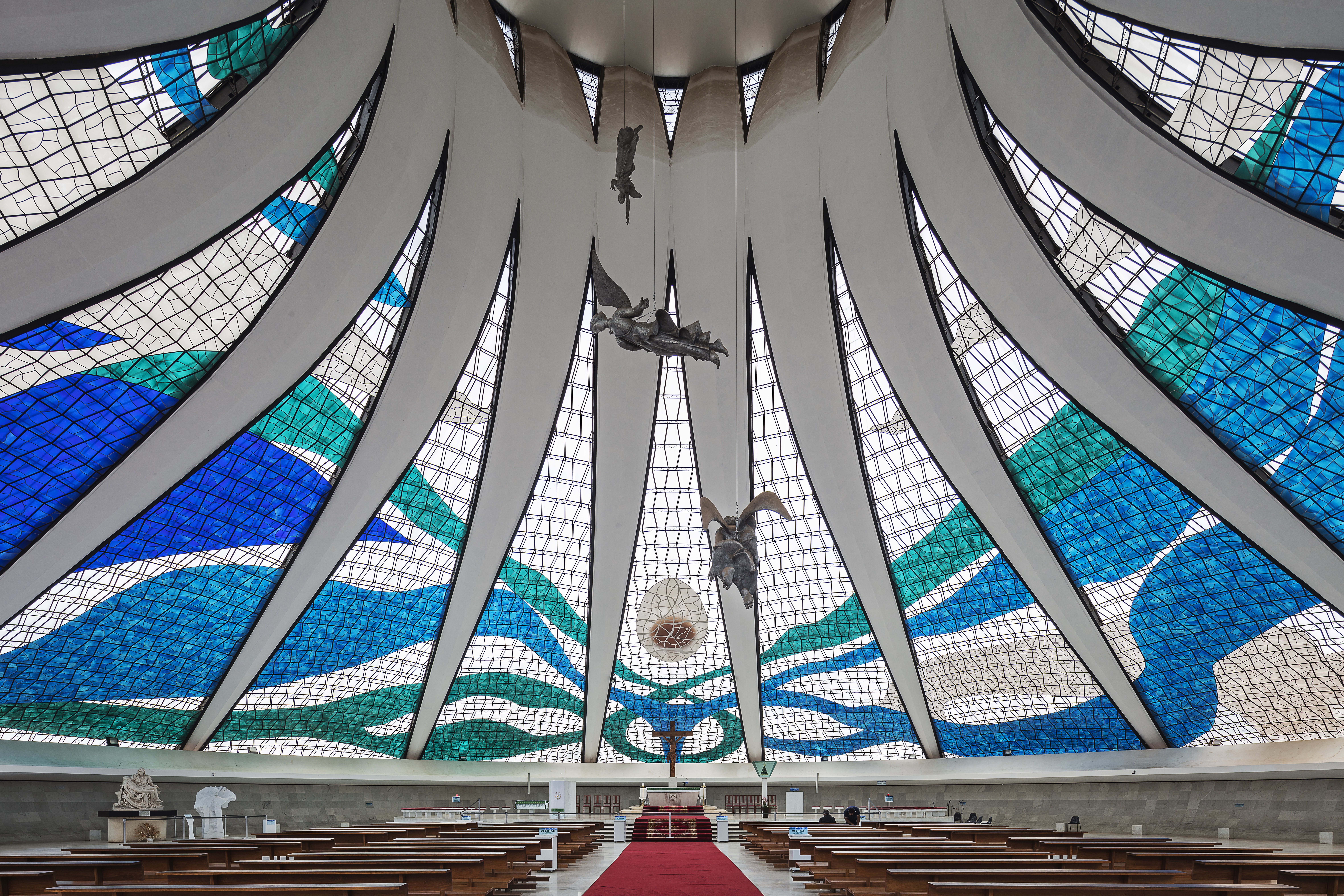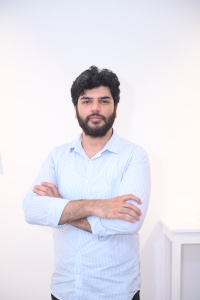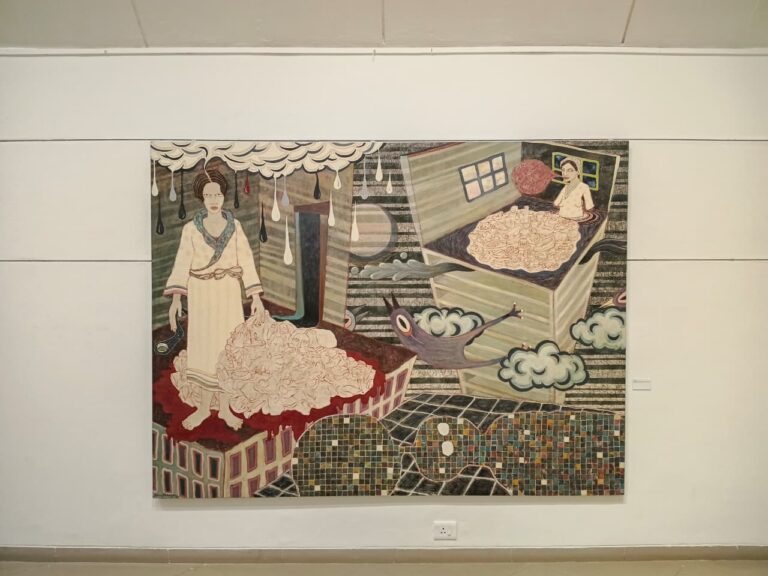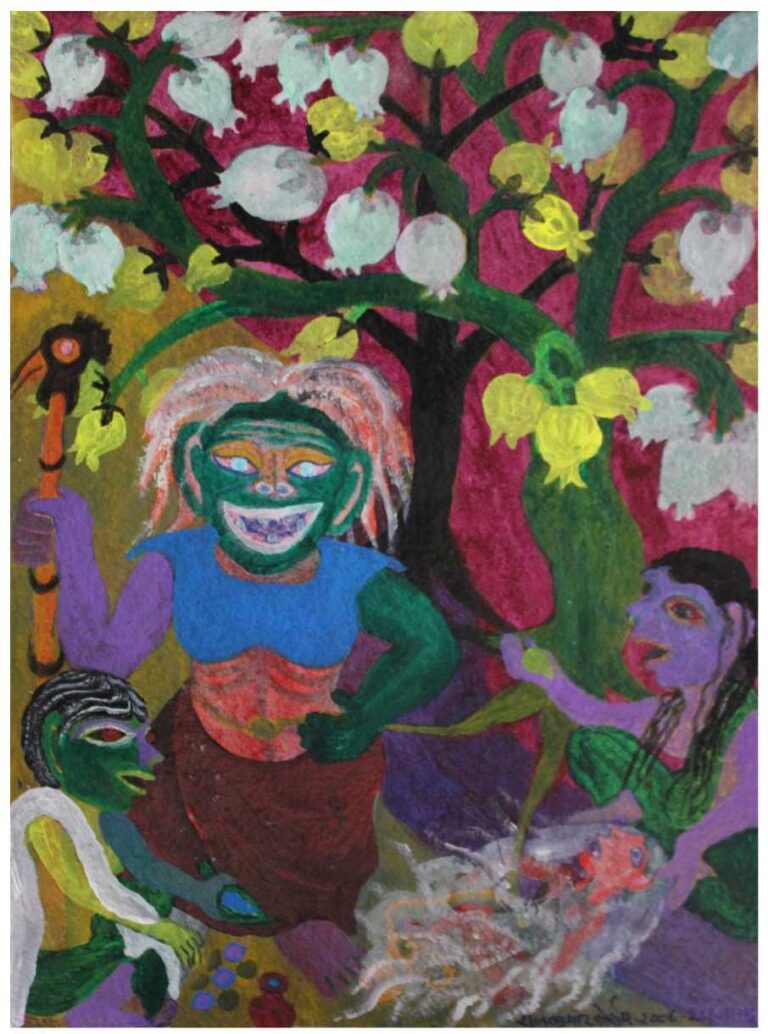The museum recently came up with an exhibition, an inaugural function to the curtain raiser upcoming Second Edition of Bihar Museum Biennale 2023. The curtain raiser was facilitated by two exhibitions; Brasilia 60+ and the Construction of Modern Brazil, a photography exhibition that Celebrates 200 Years of Independence and Nature Strikes Back: Photographs by Emmanuel Lenain, Ambassador of France to India, both curated by Dr. Alka Pande. The travelling exhibition, Brasilia 60+ and the Construction of Modern Brazil provides a visual account that walks us along the course of the history of modern Brazil. A visual narration of socio-political and economic changes that represent modern-day Brazil. The exhibition focuses on the making of the new capital city of Brazil; Brasilia and is a commentary on 200 years of Independence. The exhibition was previously showcased in cities including Delhi, Bangalore Goa, Chandigarh and Kolkata.

The photographs of Leonardo Finotti, Cristiano Mascaro, Marcel Gautherot / Instituto Moreira Salles and Cristiano Mascaro tend to showcase the grandeur of the new capital. Mostly wide angle and aerial shots which intend to project the frame to look more dynamic in nature. Manan Shah in conversation with Leticia Marranghello, a Representative from the Brazil Embassy explores different developmental aspects of Brasilia, specific to art, architecture and history. The conversation dwells on the need for such cultural exchange programmes and comments upon the photographs, technique and approach used.
Manan Shah (MS): Since the exhibition has been on display in four different cities – Delhi, Kolkata, Bangalore, Chandigarh and Goa – how was this exhibition at Bihar Museum conceptualised to make it stand apart from its previous iterations?
Leticia Marranghello (LM): When we organize an itinerant exhibition, we always have to adapt it to fit better the needs and the space provided by the museum hosting it. We also take into consideration the vision and feedback of the museum’s curators. In the case of Patna, the exhibition “Brasília 60+” is also a curtain raiser for the Bihar Museum Biennale, which brings even more interest from the public. However, in essence, our goal with the exhibition remains the same: to present Brazil (in this case, the country’s capital) to the Indian public and help build bridges between the two countries.

MS: The photographs have created an archive of influences and amalgamation that represent modern-day Brazil. How important do you think it is to create a repository of photographs to draw a relation between past and present?
LM: Image certainly is one of the most powerful ways to express an idea. In the exhibition “Brasília 60+”, we try to show the public the greatness of this project undertaken in the 1950s, which was to build a new capital city from scratch. In this sense, the pictures were chosen to tell a story of how this project evolved, as well as how much manpower and creativity were needed first to design the city and its main buildings and then to actually finalize its construction. When you visit the exhibition, you can clearly see that the location chosen for the new capital was an empty space and you can see how much hard work was put into building it. This is an important illustration of how the creation of Brasília was a milestone in Brazil’s development and how it was meant to help bring Brazil into a more modern era. Of course, all these facts are explained in detail in several books, but the photographs of the city’s construction bring us closer to understanding what they meant to those involved in the process at the time.
MS: The many photographs in the exhibition are aerial shorts. Looking at these works, do you think this photographic technique complements the soaring socio-economic development of the country over the course of 200 years from colonisation to independence?
LM: Brazil was a colony for around 300 years, becoming independent from Portugal in 1822. The aerial shots displayed in the exhibition were taken in the 1950’s, during the construction of Brasília and in a different historical context. This kind of technology would not have been available during colonization and I would qualify it as an example of the technological development of the 20th century.
MS: The adage “50 years in 5” was embraced by the 21st President of Brazil Juscelino Kubitschek, whose tenure marked the great advancements in Brazil. Do you see the current architectural landscape carries the legacy of Kubitschek?
LM: Certainly. In Brazil, when we think of President Juscelino Kubitschek, Brasília is the first thing that comes to mind. When deciding to implement the project of moving the capital to the centre of the country, JK (as he is known in Brazil) set the stage to build a modern architecture complex, applying many of the ideas put forward by internationally recognized architects, such as Le Corbusier. Especially, he gave Oscar Niemeyer, Brazil’s most renowned architect, the perfect opportunity to express his creativity and leave a mark on the country’s landscape. All these facts have strongly influenced Brazilian architecture in the past decades.

MS: The selected entry by the Brazilian architect Lucio Costa for the architectural design was the shortest among entries for the public competition to design the new capital, Brasilia. Did this approach start a new wave of representing ideas in a succinct manner?
LM: Not that I am aware. At the time of the competition, Lúcio Costa was already one of the most respected architects of Brazil and his design was chosen because the selection committee trusted that it displayed the best vision of a new capital city, despite it being succinct.
MS: As seen in the works by Brazilian landscape architect Roberto Burle Marx, he took inspiration from the biodiversity of different pockets of the world for his designs. Do you think such an approach is synonymous with Brazilian architecture with a global appeal?
LM: Surely Roberto Burle Marx adopted a very innovative approach to landscape design. He moved away from a more classical tradition of almost complete control over nature and proposed that gardens, for example, should endorse a more organic aspect. In doing so, he highlighted the value of tropical plants and environmental diversity. These ideas are very relevant for Brazil, a multi-diverse country, with several different biomes and home to the biggest tropical forest on the planet. Burle Marx showed that these qualities should be appreciated and that native plants could be as beautiful as the species traditionally used in the landscape. These concepts seem to have gained relevance internationally in the past few decades when we saw the debate about sustainable development and the environment acquire great visibility. In this sense, his ideas of highlighting the value of nature and of local resources are still very relevant today.
MS: Do you think the exhibition provides an account of architectural history through which the younger generation can map out the changing nature of the Brazilian landscape?
LM: We hope that this exhibition can contribute to the younger generation understanding of how Brazilian architecture changed in the 20th century. As you are aware, Brazil became independent from Portugal in 1822 and, for the next one hundred years, the country struggled to build its national image: an image that would be its own and unique to Brazil as an independent country. Architecture and the arts were important parts of that process. At the beginning of the 20th century, several artists started movements and proposed styles that would contribute to build Brazil’s national identity. The Modernist Movement, in the 1920s, is the most important representative of this tendency. In building Brasília, JK united several aspects of what “modern” meant at the time. He strived to consolidate a modern economy and endorsed modernist architecture. In a way, he contributed to the application of the precepts of the Modernist Movement, as well as to strengthening Brazil’s national identity. Brasília was also part of a project to occupy the centre of the country. When you consider all of these aspects together, you see that the main governmental buildings (designed by Niemeyer), the “Plano Pilot” (Brasília’s urban plan) and even the existence of the city in itself are strong reminders of how the country evolved during the last century.

MS: The exhibition saw a high number of footfalls. How different was the response from Delhi, Bangalore Goa, Chandigarh and Kolkata?
LM: The response was similar and very positive in all cities where the exhibition was held.
MS: Will we see more exhibitions which aim to strengthen the India – Brazil relations visà-vis art exhibitions and various programs across different disciplines?
LM: Of course, the Embassy of Brazil in India is working on different projects to showcase Brazilian culture to the Indian public. We believe this line of work is very important to help bridge the gap between Brazilian and Indian societies. Even though both countries enjoy very close and fruitful relations, there is still little knowledge about Brazil in India and vice-versa. These initiatives are a way to show people Brazilian literature, cinema, visual arts and gastronomy, among others, and in doing so contributing to even stronger relations between our two countries.

#LeticiaMarranghello #MananShah #interview #Brazil #India #Brasilia #Art #Architecture #BiharMuseum #Patna #artreview #takeonart #takewriting #takecurator #artcurator #artwriting #artcritics #artpublications #curatorialwriting #artcriticism #arthistories #artdiscousre #artcollaboration #artcreatives #artcommunities #arthistory #criticaldiscourse














